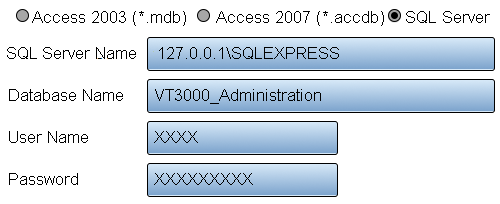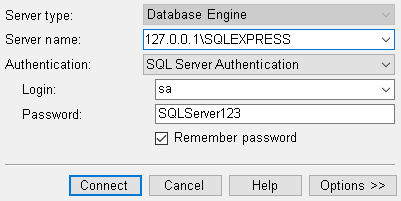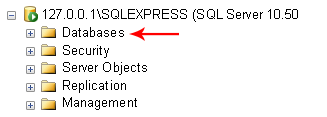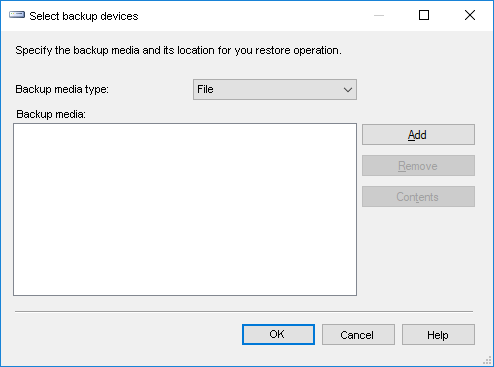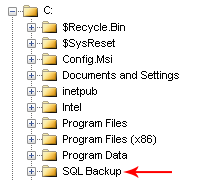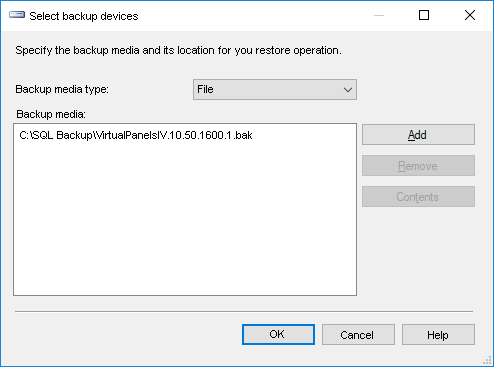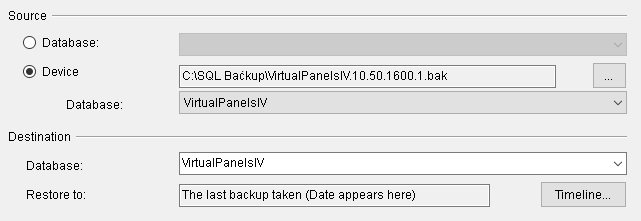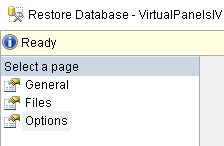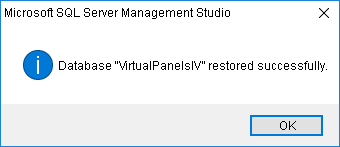VT3000 - Update Database - SQL Server
Overview
Use this method to update a VersaCall database using SQL Server. This may be needed if the update through the VT3000 Core software is not working properly or if you are storing the VersaCall databases on a separate computer/server. For this method to work properly, you must physically access the VersaCall computer or the Server that is storing the databases. The backup files must be on the VersaCall computer or the Server storing the databases.
Requirements
1. The VT3000 Core Software must be installed and running on your system.
2. The Databases must already exist on your SQL Server instance.
3. You must have the backup file saved on the computer/server that the SQL Server Instance is installed on.
4. You must have SQL Server Management Studio installed on the computer/server.
5. You must have the SQL Server name. This includes the computer name or IP Address and the SQL Server Instance name.
6. You must have the Login and Password for the SQL Server instance.
NOTE: If you have any questions regarding these requirements please contact VersaCall Support for assistance.
Instructions - Find the database & SQL Server location
1. Open the VT3000 web-interface - select VT3000 - select Administration - select System Settings, select Global.
2. Under the Database Locations heading, expand the details for one of the databases.
3. If the SQL Server Name field looks like the image below, you will need to access the VersaCall computer. User Name & Password will differ, we are representing it with (X).
4. If the SQL Server Name field has anything different from the image in # 3, you will need to access the Server that is storing the databases. You may need to contact your IT department for assistance.
Instructions - Restoring the Database(s) in SQL Server
The steps below show images from SQL Server 2008. The steps for other versions is the same and the screens will be very similar.
1. Navigating to the Backup files can be difficult inside SQL Server. We suggest creating a new folder. Open Windows File Explorer by selecting the icon.
2. Select the C Drive - right click on the icon and select New Folder.
3. Name the new Folder SQL Backup.
4. Select the Windows Start button - find the Microsoft SQL Server 2008 R2 (or your version up to SQL Server 2016) folder - select the folder to expand it. If you are using SQL Server 2017 or above you will select the SQL Server Tools (your version) folder.
5. Find the SQL Server Management Studio icon - select it.
6. On the Log In page enter the following for the Default VersaCall setup where SQL Express is being used - click on the Connect button. If you are accessing another server, please contact your IT department for the sign in information.
a. Server Name - 127.0.0.1\SQLEXPRESS
b. Login - sa
c. Password - SQLServer123
7. Click on the Databases folder so that it is highlighted - right click on the folder - select Restore Database...
8. Under Source select Device - select the "..." button on the right.
9. Select the Add button.
10. Use the file tree to navigate to C:\SQL Backup - expand the folder. This is the folder we suggested making in the previous steps. If you setup something different please navigate to that location.
11. Select a database file (double click on file).
12. Click on the OK button at the bottom of the window - all the file information will be generated in the fields.
13. Click on the OK button on the backup devices menu.
14. Restore database page will load.
a. Source - shows the database file location that was selected.
b. Destination - ensure the correct Database is selected in the Database field. Our example shows we selected the Virtual Panels IV backup so we want to restore that to the existing Virtual Panels IV database.
15. Under the Restore Plan heading ensure the Restore box is checked next to the file selected in step 9.
16. Select Options under the Select page heading inside the Restore Database window.
17. Under the Restore Options heading click on the box for "Overwrite the existing database" option. Ensure the box is marked with a check mark.
18. Under the Server Connections heading click on the box for "Close existing connections to destination database" option. Ensure the box is marked with a check mark.
19. Select OK button at the bottom of the window.
20. A successfully restored window will appear, select the OK button. If you do not see a successful message appear or you get an error message, please contact VersaCall Support for assistance.
21. Repeat steps 5 to 15 for any additional databases you wish to restore.
Step by Step Guides
Restore/Update Databases - VT3000
Having Trouble?


